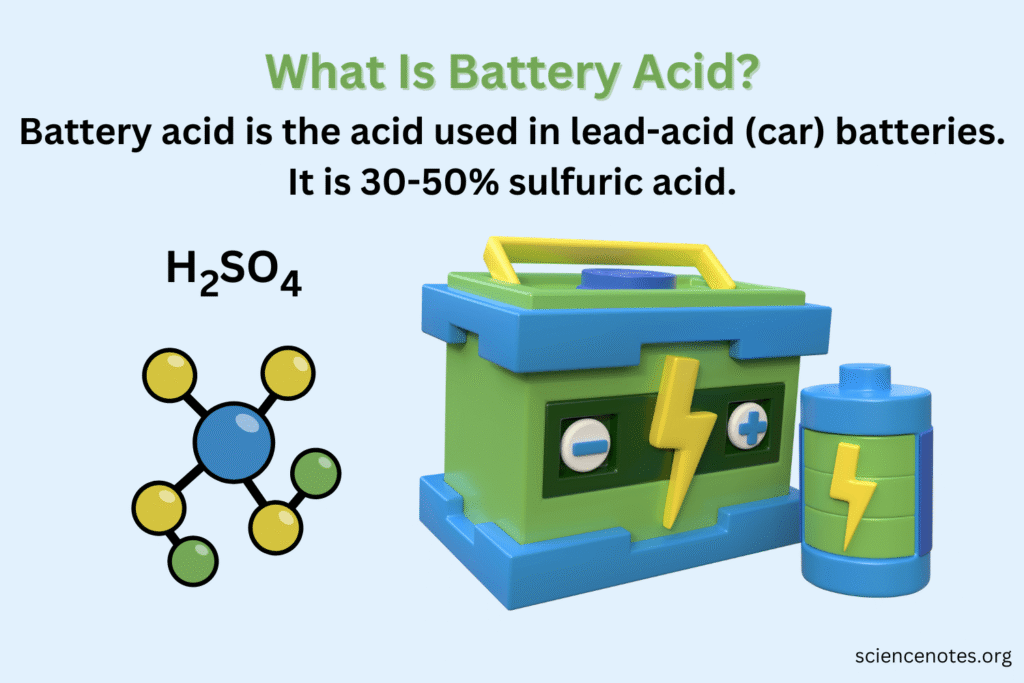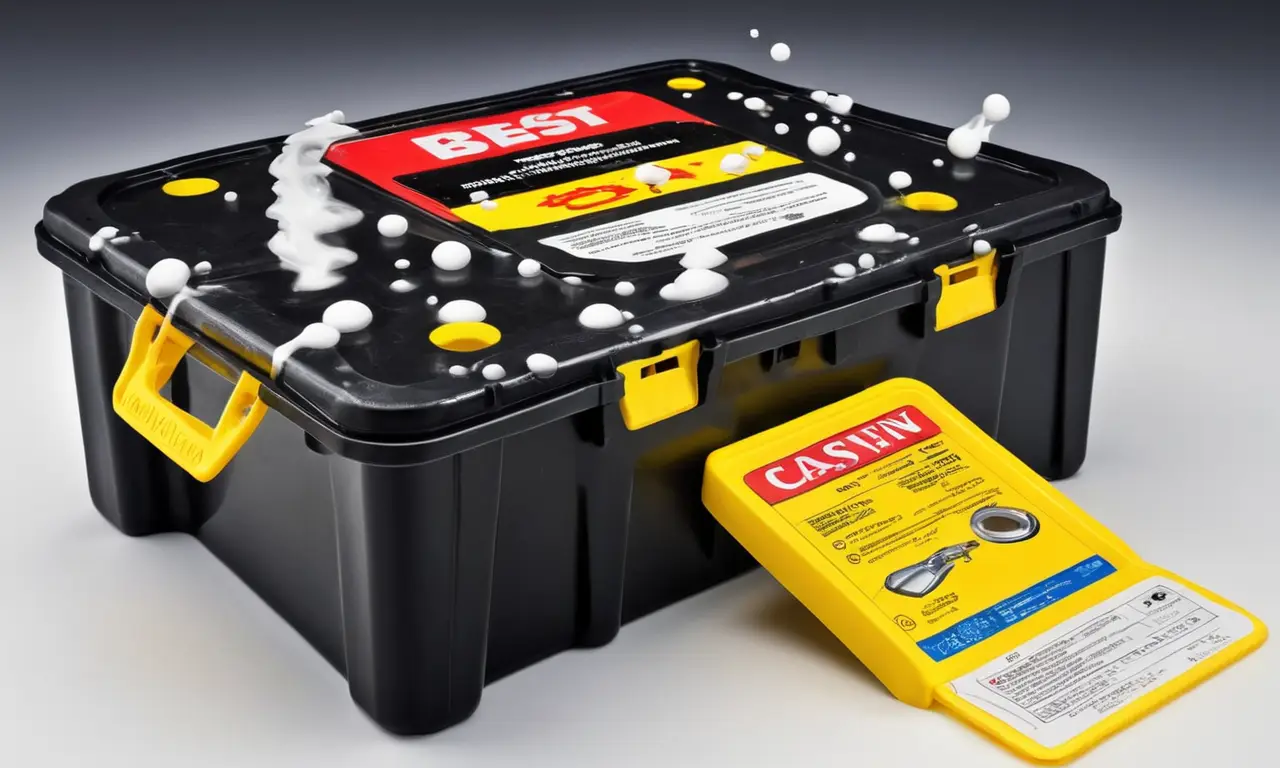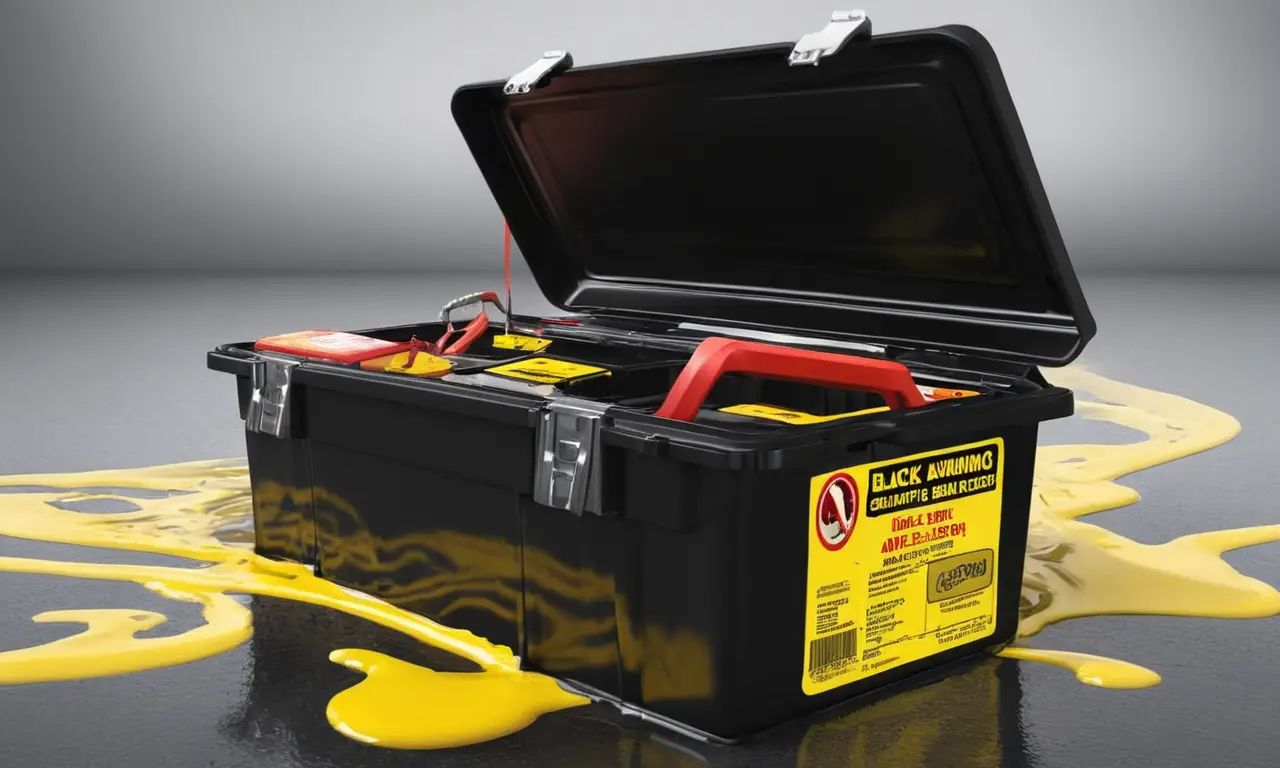
Your car’s battery is an essential component, providing the power needed to start your engine and run various electrical systems. While you might not think much about it, there’s a crucial ingredient inside that makes all this possible: what acid is inside car batteries. This electrolyte plays a vital role in facilitating the chemical reactions that generate electricity. Understanding how it works and how to maintain it can significantly extend your battery’s lifespan and keep your vehicle running smoothly.
This article will delve into the world of car battery electrolytes, exploring what they are, why sulfuric acid is used, its function in starting your vehicle, and essential maintenance tips to ensure optimal performance.
What is Car Battery Electrolyte?
Car battery electrolyte is a liquid solution that conducts electricity within the battery. It’s responsible for enabling the chemical reactions between the lead plates inside the battery, ultimately producing electrical energy. Without this electrolyte, the battery wouldn’t be able to function. The type of electrolyte used in most car batteries is sulfuric acid, chosen for its effectiveness and ability to conduct electricity efficiently.
The electrolyte solution isn’t just a simple liquid; it’s carefully formulated with specific concentrations of sulfuric acid and water. This precise mixture ensures optimal conductivity while minimizing the risk of corrosion and damage to the battery components. The concentration of the electrolyte can vary depending on factors like temperature and battery type, but generally, it falls within a specific range for efficient operation.
Sulfuric Acid in Car Batteries

As mentioned earlier, sulfuric acid is the most common type of electrolyte used in car batteries. This highly corrosive acid plays a crucial role in facilitating the chemical reactions that generate electricity. When the battery is connected to a circuit, the sulfuric acid allows ions (charged particles) to flow between the lead plates, creating an electrical current.
The use of sulfuric acid stems from its unique properties. It’s a strong acid with excellent conductivity, meaning it readily allows the passage of electric charge. Additionally, it reacts with lead and lead dioxide, the materials used in battery plates, to produce electricity. This reaction is reversible, allowing the battery to be recharged by applying an external electrical current.
The Chemical Reaction
The chemical reaction within a car battery involves the oxidation and reduction of lead and lead dioxide. When the battery discharges, sulfuric acid reacts with lead to form lead sulfate, releasing electrons in the process. These electrons flow through the circuit, powering your vehicle’s electrical system. Conversely, when the battery is recharged, the reverse reaction occurs, converting lead sulfate back into lead and lead dioxide, storing energy for later use.
Role of Electrolyte in Starting a Vehicle
The electrolyte plays a crucial role in starting your vehicle. When you turn the ignition key, the starter motor draws a large amount of current from the battery. This sudden demand requires a high concentration of ions to facilitate the rapid flow of electricity. The sulfuric acid electrolyte ensures that this happens efficiently, providing the necessary electrical power to crank the engine and bring it to life.
Without sufficient electrolyte levels or proper conductivity, the battery wouldn’t be able to deliver the required current to start your vehicle. This can result in a slow cranking sound, difficulty starting, or even complete failure to start. Maintaining adequate electrolyte levels is essential for ensuring reliable starting performance.
Importance of Maintaining Battery Electrolyte Levels

Over time, car batteries naturally lose some of their electrolyte due to evaporation and chemical reactions. It’s crucial to monitor and maintain the electrolyte levels to ensure optimal battery performance. Low electrolyte levels can lead to reduced conductivity, hindering the flow of electricity and ultimately affecting your vehicle’s starting ability.
Regularly checking the electrolyte level is a simple yet essential maintenance task. Most car batteries have removable caps that allow you to visually inspect the electrolyte level. If it appears low, adding distilled water (never tap water) can help restore the proper level. However, always consult your owner’s manual for specific instructions and precautions regarding battery maintenance.
Car Battery Maintenance Tips
Beyond checking the electrolyte levels, there are several other maintenance tips that can prolong the life of your car battery:
- Keep terminals clean: Corrosion on the battery terminals can impede electrical flow. Regularly clean them with a baking soda and water solution or a specialized terminal cleaner.
- Avoid extreme temperatures: Both extreme heat and cold can negatively impact battery performance. Park in shaded areas during hot weather and consider using a battery blanket in cold climates.
- Don’t overcharge the battery: Overcharging can damage the battery plates and reduce its lifespan. Ensure your charging system is functioning properly.
- Disconnect the battery when not in use: If you plan to store your vehicle for an extended period, disconnect the battery to prevent it from draining.
By following these simple maintenance tips, you can help ensure that your car battery performs reliably and lasts for many years.
Conclusion
Understanding the role of what acid is inside car batteries – specifically sulfuric acid – is crucial for maintaining your vehicle’s electrical system. This electrolyte facilitates the chemical reactions that generate electricity, enabling your car to start and run smoothly. By monitoring electrolyte levels, keeping terminals clean, and following proper maintenance practices, you can extend the life of your battery and avoid costly replacements. Remember, a well-maintained battery is essential for a reliable and enjoyable driving experience.
